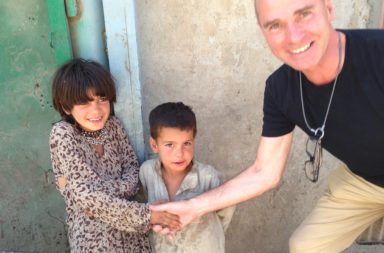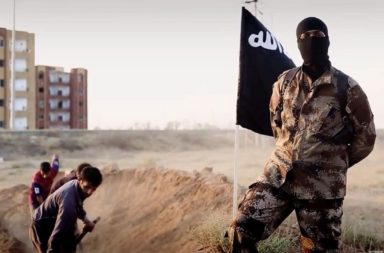Bombs can be disarmed, enemies killed or detained. But how can we defuse an idea; how can we kill the incorporeal?
Last week, Omar Mateen shot and killed 49 people in a nightclub in Orlando.
In March, terrorists killed 32 people in two attacks in Brussels.
Last December two people shot and killed 14 people in San Bernardino.
Last November terrorists killed 130 people in Paris.
All these attacks have one thing in common: The Islamic State. Some of these attackers were directly trained in Syria by IS, others had loose affiliations, but IS had invaded the hearts and minds of all these people. They have succeeded in brainwashing all these people for many reasons, but it is clear that decentralized error on this scale would not be possible without one major tool: The Internet.
“IS is the first terrorist group that dominates a physical and a digital territory.” -Jared Cohen, head of Google Ideas
IS is a new brand of terrorism. In the days of Al Qaeda, prospective terrorist had to travel to the Middle East to receive training at terrorist training camps. Now, some terrorists travel to Syria for training, but it is no longer required. IS has loosened its grip over the entire organization and has let their idea do all the work. They use Internet propaganda and digital media to coordinate and spread their message of hate. They have used the app Telegram to securely communicate and spread training materials. They have published a digital magazine that serves as propaganda for the world.
Anyone with an interest can begin to get involved and become a part of the organization. This is the true change from the past. If someone wanted to join Al Qaeda, they had to know someone, and through them could they go on to Pakistan or Afghanistan for training. Now, the process has changed, and through online sites, propaganda and training materials are disseminated, so these barriers to entry have been lowered. This is a major reason why attacks seem to be happening more often: they require less time and training to prepare, and more people can become a part of these organizations with a lot less effort than int he past.
What Kind of Propaganda?
One of the most well known propaganda campaigns was on Twitter when ISIS was beginning the siege on Mosul. Despite being outnumbered 15-to-1, ISIS used the hashtag #AllEyesOnISIS, which spread fear into the troops stationed in Mosul, and like the days of medieval warfare, tricked the enemy (in this case the Iraqi troops) into believing that they would lose, so the Iraqi troops fled the city and left Mosul to be taken by ISIS.
ISIS also uses their media teams to connect with those all over the world. A lonely teen in Alaska could be chatting online with ISIS agents. Through encrypted tools such as Telegram and Skype, ISIS agents can radicalize people from the safety of their strongholds in Syria and Iraq, they do not have to expose themselves in order to grow. This is a massive shift in the way of war, as expanding requires little to no risk.
ISIS has also shown exceptional technical skill in video production, as they create well produced propaganda videos that are spread through social media and news websites. These videos serve to expand the reach and improve the image of ISIS to sympathizers world wide.
A new pro-#ISIS propaganda video features @realDonaldTrump: https://t.co/WwTrDZr8IU #NeverTrump @billyjoel pic.twitter.com/BSQZUhOthU
— Brother Mark B (@ProgressWeekly) May 28, 2016
They also have created apps to radicalize children.
ISIS uses propaganda to spread messages of mercy, belonging and utopia to those they wish to attract, while simultaneously spreading messages of brutality and war to those they wish to inspire fear.
The Role of Google, Facebook and Twitter
Facebook, Google And Twitter have been put in a tough place. Of course they want to fight this propaganda war, but at the same time, it has to consider the privacy and rights of their users. However, these services have been doing a very good job with deleting this propaganda. Internet activists have identified and shut down over 100,000 accounts so far on Twitter, and other efforts have taken place, but this just isn’t enough. The ease of making new accounts and pages is so simple, and that simply circumvents the process. Those who want to connect with IS will find a way, but shutting down accounts will definitely help make it harder for them to connect, and many who are not serious about IS will not connect with them.
Unfortunately, the way to completely combat this threat is to put social media under complete surveillance and control, and this is fundamentally opposite to the beliefs of the tech companies. They understand that this threat is horrible, but they are looking at the big picture and see this change as the beginning of the end for an open and free society. The social media giants have done their part, but that is it; they refuse to do more for fear that that will become the new standard.
Role of Government
The government has been aware of this new trend, and is actively trying to fight it. A tiny unit has been created to fight this digital war, called The Center for Strategic Counterterrorism Communications. It has a budget of a measly 5 million dollars, so while they can have some effect, don’t expect it to turn the tide. The enemy has an army of people on this digital propaganda war, and Washington is out-manned and outgunned. The government needs to invest more in fighting this new brand of terror.






